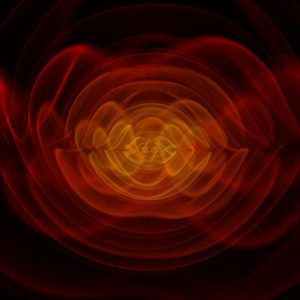 The maiden direct detection of gravitational waves (GW160914), announced on February 11, the culmination of intense worldwide scientific efforts spanning almost four decades, is one of the greatest scientific discoveries of all times.
The maiden direct detection of gravitational waves (GW160914), announced on February 11, the culmination of intense worldwide scientific efforts spanning almost four decades, is one of the greatest scientific discoveries of all times.
In particular, kudos to the Laser Interferometer Gravitational-Wave Observatory (LIGO) team for being successful in one of the greatest experimental physics feats which was originally conceived way back in 2002. Now we have a new window to unravel the most violent phenomenon of the cosmos.
It is very heartening for Indian scientists, who have played a very significant role carrying forward frontline research on various aspects of gravitational wave astronomy. In fact, two of the pioneers here are Prof. Bala Iyer at Raman Research Institute, Bengaluru, and Prof. (emeritus) Sanjeev Dhurandhar at the Inter-university Centre for Astronomy and Astrophysics (IUCAA) in Pune. The gravitational astronomy group at IUCAA and some other Indian centers have contributed to various relevant research as part of the global LIGO team.
One may be tempted to fancy that this discovery has suddenly elevated Einstein’s General Theory of Relativity (GTR) from the status of being a mere “electrostatic” effect to that of dynamic “electromagnetism” where the effect propagates like a wave with a finite speed (of light). However, it should be borne in mind that unlike the electromagnetic case, one cannot obtain any realistic analytical derivation for such waves. The solution Einstein obtained 100 years ago is only a highly approximate solution involving only weak gravity.
This has to do with complex non-linear nature of GTR vis-à-vis simple linear nature of electromagnetism. And despite dramatic improvements in the prowess of numerical relativity, in order make prediction about the expected pattern of gravitational waves resulting from, say the merger of two compact objects orbiting one another.
One needs to make various tacit assumptions or simplifications. Such computations, in a sense, become easiest when the merging compact objects are black holes. This is so because they are the simplest objects in the Universe: a black hole is just a single point mass with an imaginary spherical boundary called the event horizon.
Thus, when one considers a black hole-black hole collision, one essentially considers gravitational interaction of two point masses dressed by their horizon. In contrast, a compact object such as a neutron star has a dense extended body with complex structure about which we have little idea. Hence, the study of the merger of two neutron stars is far more complicated than the corresponding black hole case.
The present event – GW160914 – has been interpreted to have resulted from two compact objects having masses 36 (+5/-4) and 29 (+4/-4) solar masses respectively. These objects have been interpreted to be “black holes” because the original separation of them was only around 350 km. Once the two black holes merge, a dynamic single hole black hole is supposed to be born.
This dynamic black hole is expected to go through a stage called “ring down”, where any distortion in the shape is dissipated as more gravitational waves. The mass of the final black hole has been estimated to be about 62±4 solar masses. And the missing 3.0±0.5 solar masses of energy was presumably radiated away in the form of gravitational waves, in accordance with mass-energy equivalence.
But one may ponder and introspect whether the 0.02 second duration burst of gravitational waves has confirmed that those massive compact objects involved here indeed possessed event horizons from which nothing, not even light, can escape. If an energy equivalent to three solar masses have been radiated out, a significant portion of it must have come from the mass-energies of the two progenitor black holes.
The site of mass energy in a black hole is the central singularity. How can so much energy be extracted from a singularities and in a fraction of a second? Also during the “ring down” stage, can any energy come out of the trembling horizon of the dynamic black hole?
For a broader scientific perspective, one may note here that, in the past 15 years, many authors have pointed severe conceptual difficulties associated with the black hole paradigm, and have argued that so-called black holes are only quasi-black holes. Some of the black hole alternatives which have invoked some quantum gravity ideas are ‘gravastars’, ‘dark energy stars’, ‘black stars’ and ‘fuzzball’. On the other hand, the maiden suggestion for a quasi-black hole is called ‘eternally collapsing object’ that is an ultra-hot ball of plasma.
All such black hole alternatives are practically as compact as true black holes and can very well be accommodated in a 350 km orbit. But there is an important difference: Unlike true black holes, these are dense extended objects without any event horizon. Hence, the radiation of mass-energy of around three Suns may be better understood in scenarios where the compact objects involved for such mind boggling luminosities are quasi-black holes having no horizons. Of course, as of now, nobody has studied the expected pattern of gravitational waves resulting from the coalescence of quasi-black holes.
If these results are correct, they would imply that so-called massive black holes are only quasi-black holes. It would mean GW150914 resulted from the merger of two quasi- black holes and hence so much energy could be radiated out from the event.
Coalescence of two neutron stars are expected to generate not only bursts of gravitational waves but also bursts of gamma rays. Similarly, if the progenitors of powerful gravitational wave bursts are say balls of plasma, such events should be followed by bursts of gamma rays or x-rays. In contrast, the coalescence of true singular black holes need not give rise to strong electromagnetic counterparts. Thus, one wishes, in future one would plan for multi-spectral observations in the coincidence of gravitational burst observations. This may help unravel true physical nature of the progenitors of gravitational waves.
Such questions apart, it’s a moment for celebration for astronomy and in particular for Einstein’s theory of general relativity which just completed its centennial. All of us are fortunate that this great development of natural sciences happened in our lifetime and many of us could witness the LIGO press conference on the night of February 11, 2016. If September 11, 2001, was one of the worst memories for modern history, February 11, 2016 turned out to be one of the best nights of human intellectual history.
